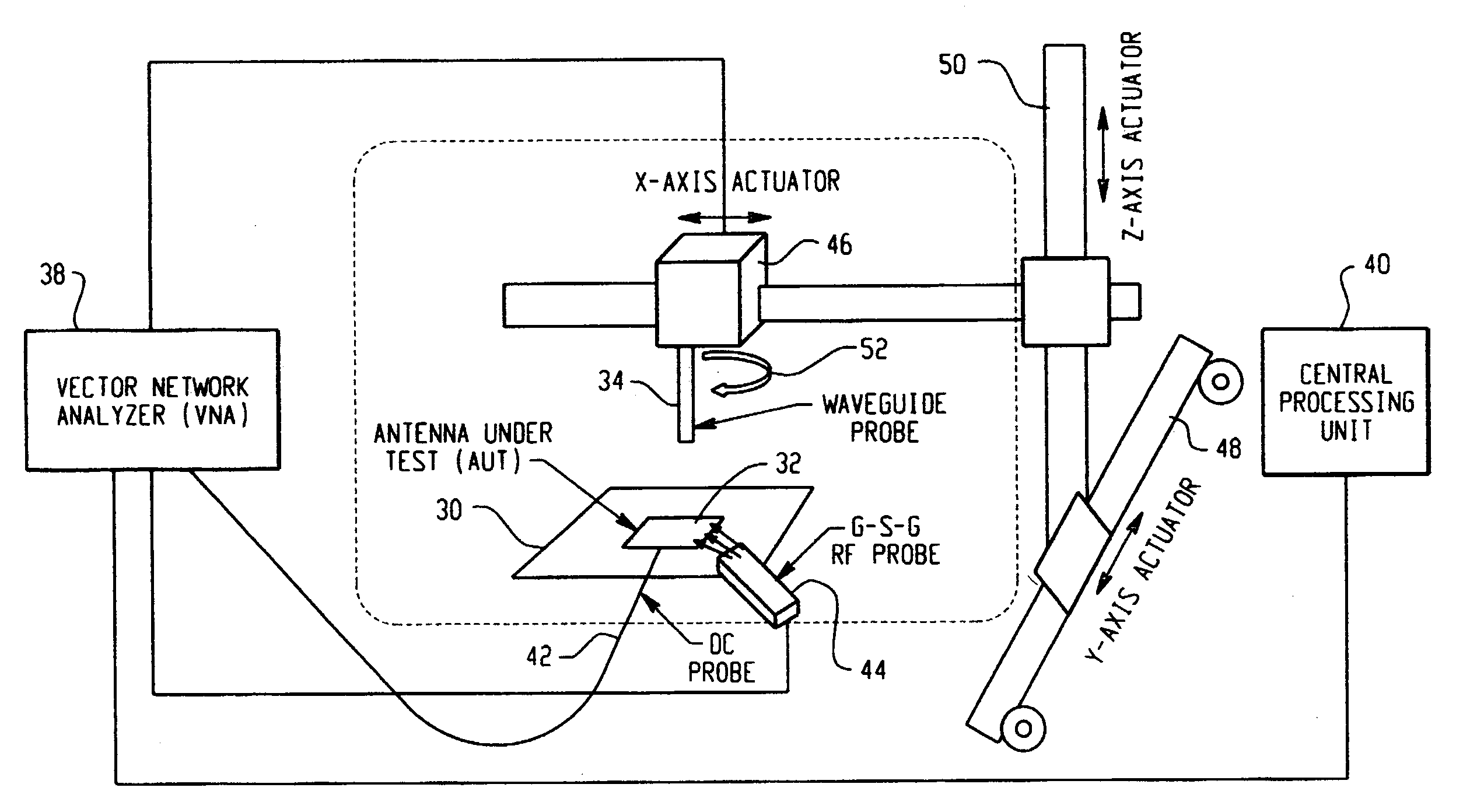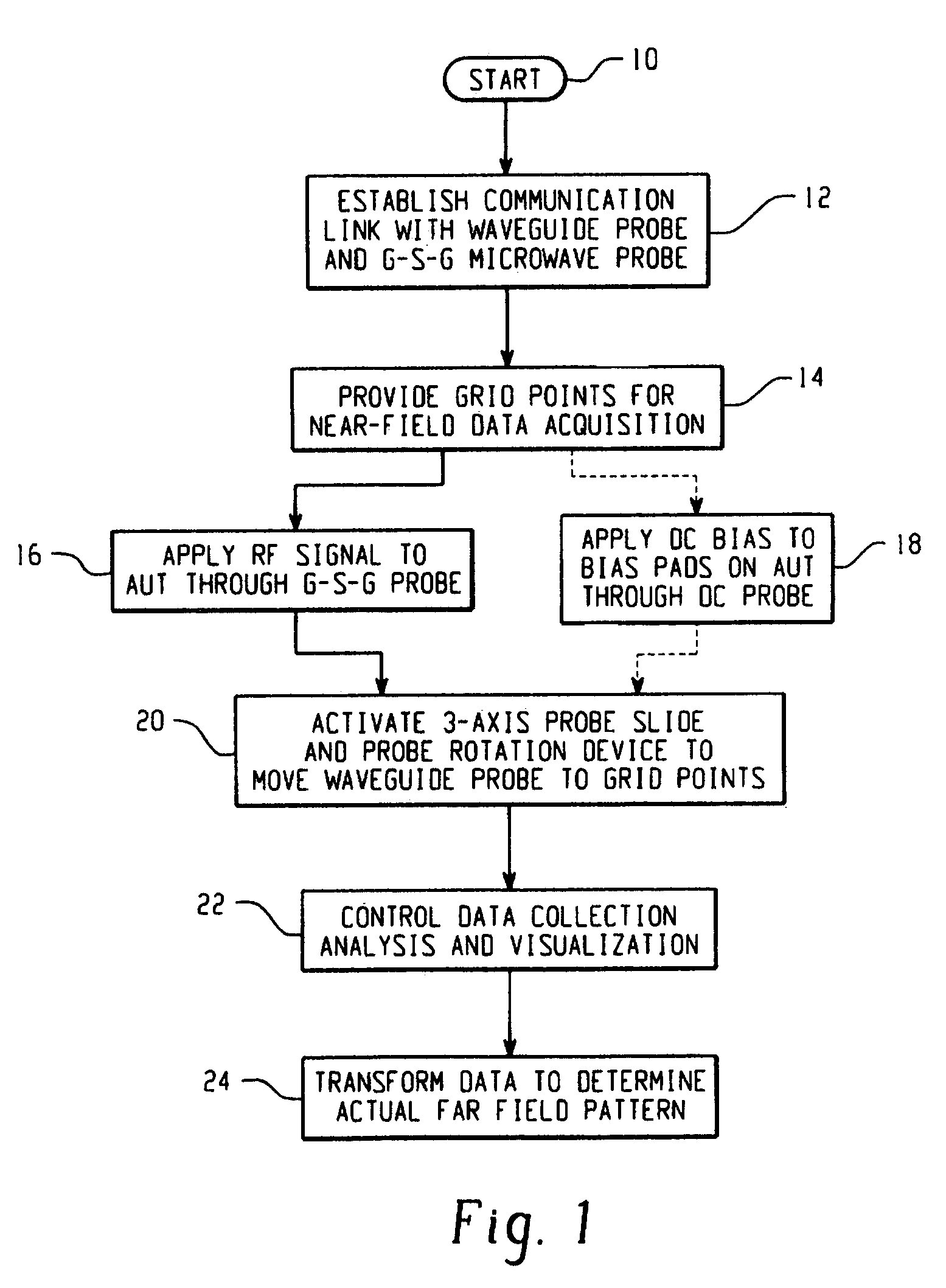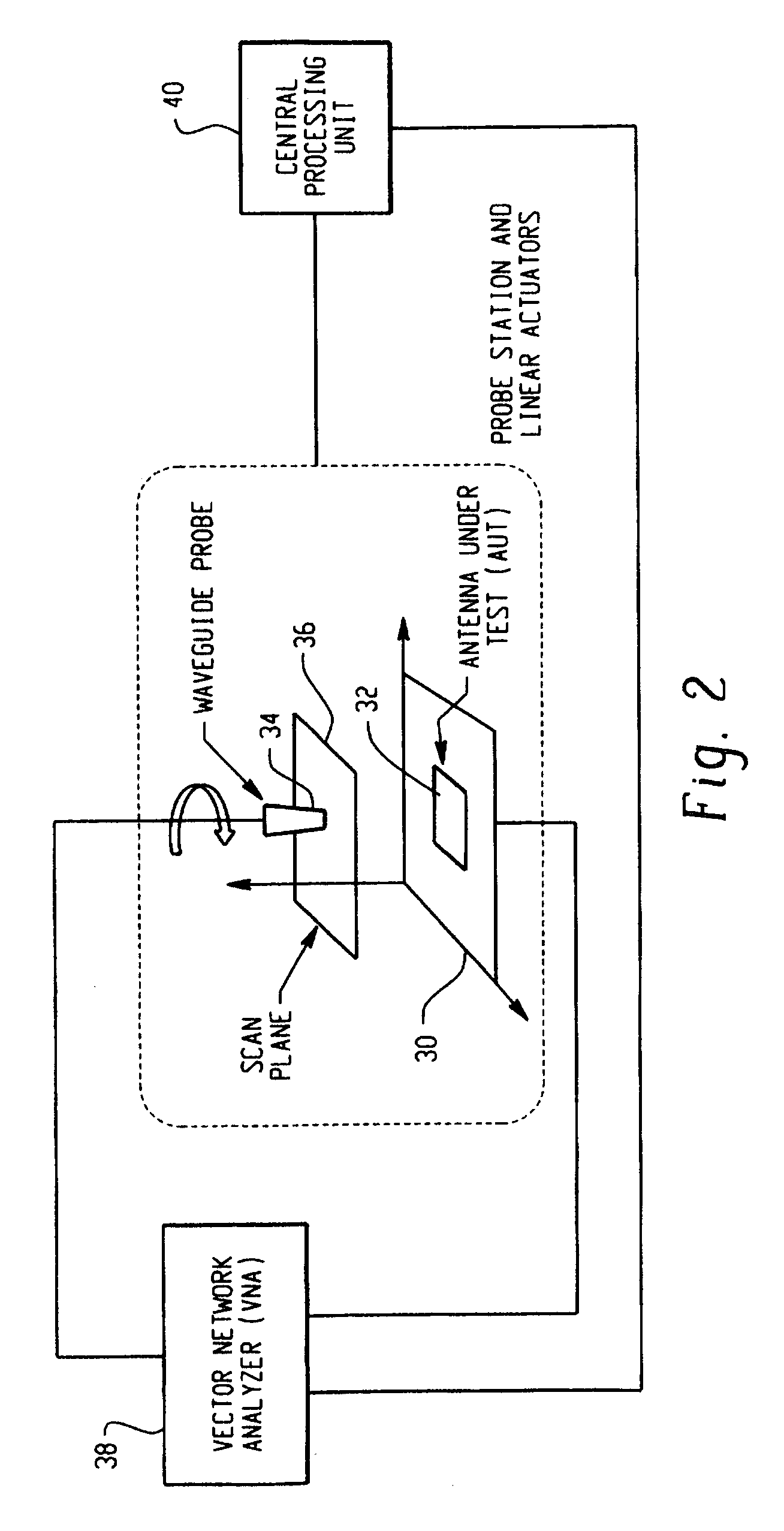Antenna near-field probe station scanner
a scanner and probe station technology, applied in the field of scanners, can solve the problems of adversely affecting the characterization, time-consuming and expensive procedures, and conventionally tested results not always producing the true radiation pattern of the antenna
- Summary
- Abstract
- Description
- Claims
- Application Information
AI Technical Summary
Benefits of technology
Problems solved by technology
Method used
Image
Examples
Embodiment Construction
[0030]The present invention relates to antenna metrology hardware for non-destructive characterization of miniaturized passive or active antennas fabricated on substrates (e.g., Gallium Arsenide (GaAs), Silicon (Si), Lanthanum Aluminate (LaAlO3, etc.) which are difficult to measure in traditional ranges because of their smaller size, fragility, and non-trivial DC biasing or complicated fixturing requirements. For the purposes of the present invention, miniaturized antennas are those having a dimension of about 1 cm or less, down to 1 mm or even smaller. Stated differently, these small antennas have a cross sectional size of about ⅕ to about ½ lambda, whereas large antennas have a size greater than ½ lambda. The scanner consists of a precision mechanical slide system, software analysis features, a probe station, and an automatic network analyzer. The turn-key antenna near-field data acquisition system in this scanner is extremely fast, automated, and user friendly. It only requires u...
PUM
 Login to View More
Login to View More Abstract
Description
Claims
Application Information
 Login to View More
Login to View More - R&D
- Intellectual Property
- Life Sciences
- Materials
- Tech Scout
- Unparalleled Data Quality
- Higher Quality Content
- 60% Fewer Hallucinations
Browse by: Latest US Patents, China's latest patents, Technical Efficacy Thesaurus, Application Domain, Technology Topic, Popular Technical Reports.
© 2025 PatSnap. All rights reserved.Legal|Privacy policy|Modern Slavery Act Transparency Statement|Sitemap|About US| Contact US: help@patsnap.com



